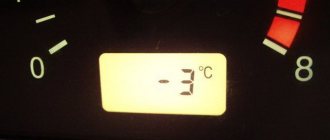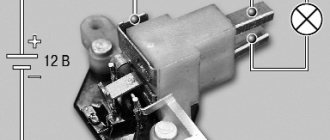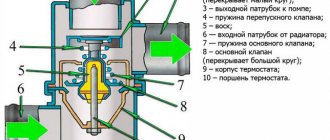We are used to the fact that to charge a car battery, you need to remove it, take it home, connect it to a charger (charger) and charge it in accordance with the recommendations for this type of battery. In principle, everything is correct when we are talking about simple and inexpensive cars of imported and domestic production. But now there are more and more foreign cars that have a lot of sophisticated electronics. There are complex on-board computers, sensors, multimedia and anti-theft systems, all kinds of assistants, a bunch of settings, diagnostic information, etc. And it is contraindicated to turn them off. What to do in such a situation?
Features of the car battery charging process
There are certain rules for charging batteries, compliance with which is considered a guarantee of safety, both for the motorist and the vehicle itself. According to them:
- To replenish the battery charge, it is recommended to partially dismantle it (negative terminal).
- The charge must be carried out in non-residential premises (garage, outbuildings, etc.).
It is important to remember that in cold weather the battery takes a charge much worse and professionals advise performing the procedure at a temperature range from 0 to +25 degrees Celsius.
And it is for this reason that in winter the battery restores capacity much worse directly during a trip, since the electrolyte does not have time to warm up.
- Directly during charging, harmful volatile substances are released. In addition, there is a risk of electric shock, so it is better to immediately remove rings, watches, bracelets and other metal jewelry from your hands.
If charging is carried out under conditions that do not involve removing the battery, which happens quite often, then the motorist will have to use a special device that provides reliable protection of the battery from damage.
Before starting work, all units must be turned off, since it is necessary to unload the battery as much as possible.
And if this is the case in winter, then the cooled battery must be moved for some time to a warm room and only then resort to manipulation with it.
Is it possible to charge a battery without removing the terminals?
In the vast majority of cases, the need to charge the battery without removing it becomes relevant when you have to deal with a car on which non-volatile components are installed. This is explained by the fact that when the power is turned off, all settings are reset to zero or, as an option, auto-locking is turned on.
Carburetor engine
And if the agenda is the issue of replenishing the charging capacity of the battery of a car with a carburetor engine, which is used advantageously within the domestic automobile industry, then it should be remembered that only one electronic unit is used here, and it is this that regulates the voltage in the generator circuit.
In this case, the switch will not respond to the connection of external charging. If an electronic controller was installed on the car to correct the composition of the fuel mixture and the owners did not interfere with the electronics, then it makes sense to charge the battery by analogy with cars equipped with an internal combustion engine with distributed fuel injection.
Injection internal combustion engine
The main distinguishing feature of injection engines is distributed fuel injection, for which a microprocessor-based unit is provided that instantly responds to information received from various sensors. In addition, the design of such controllers provides special protection, which immediately cuts off the power at the slightest voltage surge.
Therefore, it is recommended to disconnect the battery from the general on-board equipment of the vehicle, although some manufacturers do not recommend disconnecting it. How to act in such cases? Of course, follow the recommendations given in the factory operating instructions. In this case, the supplied current from the charger should not exceed the range from 2 to 8 A, which is considered completely safe for the car.
Diesel engine
It is allowed to charge the battery without removing it even if the car is running on a diesel engine. And although there is a possibility of ignition, practice shows that when the motor is turned off, such risks are minimal. And not the least role in this matter is played by the high stability of the system, operating under the control of a common electronic unit.
Parallel connection of the second battery to the car
When it is necessary to remove the battery from a car, electricians often use the following method to prevent the car’s electronic system from resetting its parameters:
- A 12 Volt battery is taken, which is sufficiently charged to support the car’s electronic system in offline mode;
- Using special wires, the battery is connected in parallel to the terminals of the car;
- Next, the main battery is turned off, but the machine’s electronic system continues to be powered by an additional energy source.
By replacing the battery in your car, you can easily charge the main battery and then return it back. The complexity of this method is that the car owner does not always have a spare battery and wires for parallel connection of an additional power source.
How to properly charge the battery without removing it from the car
In practice, many novice drivers do not know how to solve a problem that suddenly arises. In fact, everything is not so difficult, the main thing is to follow certain instructions, not forgetting about general precautions.
Volkswagen
As a clear example, we can cite the algorithm of actions for such a popular car brand as Volkswagen. It consists of performing the following steps:
- First of all, you need to connect the charger wires in pairs to the battery terminals (plus to plus, minus to minus).
- If necessary, you can not even remove the battery plug, in which case the substances released during charging will exit through the ventilation holes in the plug itself.
- If there is no increase in the acid density indicator within two hours, the battery is fully charged.
In addition to safety precautions, a mandatory condition for compliance is the level of charging current, which at the initial stage should not exceed 10% of the total battery capacity.
Further, this indicator should automatically decline.
Renault
It is recommended to perform almost identical actions when charging without removing the battery on Renault models, although experienced motorists still advise limiting yourself to only one positive terminal, removing the negative one. In addition, you should ensure that the charging terminals do not come into contact with the car body.
Peugeot 308
This French small car can easily be charged without removing the battery, which is even more useful for the car itself, given the evaporation of the electrolyte during charging in the removed state. It is important to follow the connection sequence in order to avoid failure of the fuses on the charger being used.
The voltage in this case should be 14-16 V while maintaining a constant current and its initial value of 25-30 A. As the battery is charged, this figure will gradually decrease, and if you have to work with boosters, then all these values are quite easy to control.
Ford Kuga
The American crossover battery is also charged in two ways: with and without removal. In this case, the maximum voltage level does not exceed 15.5 V, since anything higher is already dangerous for the car. In addition, there are a number of other conditions that must be met. Among them:
- Connect to the network only after connecting the charger to the battery. Disconnection is carried out in the same sequence - first charging from the network, and then from the battery.
- It is unacceptable to start the engine and other power units during charging.
- First of all, the “plus” is connected, and then the “minus”. Disabling is done the other way around - first “minus” and then “plus”.
Also, do not forget about special devices that allow you to obtain the most accurate information about the serviceability and condition of the battery, because it is possible that the unit has simply outlived its useful life and needs to be replaced.
Conclusions and additional recommendations
A new car is stored in a warehouse for several months before being handed over to the buyer. It is possible that the battery parameters will have to be restored. This procedure will eliminate unnecessary problems during operation. Given the frequent monitoring, it makes sense to think about purchasing a charger as your own.
It is preferable to use a dismantling power source and an option with an additional battery. This technique will prevent errors and failures of electronics and software. Timely, high-quality maintenance will extend the life of the battery.
You may also be interested
.
Batteries 0
How long does it take to charge properly?
The duration of the charge directly depends on the condition and capacity of the battery, as well as the recovery method used. The latter means the use of direct, alternating current and an accelerated algorithm. In most cases, motorists charge the battery for 5-15 minutes, replenishing its capacity directly while driving. But if it is necessary to completely restore the charge, then on average a device of 50-60 Ah takes from 12 to 16 hours.
In most cases, motorists charge the battery within 5-15 minutes
Is it possible to charge a battery in the cold?
If there is nowhere to go, then you have to charge the battery even at critically low temperatures. The success of the result in this case will directly depend on the location of the battery, which is usually located under the hood, in the trunk, or has an external mount. And most often, motorists have to resort to all sorts of tricks to restore the battery as quickly as possible: heating the house near the radiators and covering the car with tarps and blankets.
In case of prolonged inactivity, it is recommended to charge the car battery in the standard way.
Safety precautions when charging the battery
The key to success in absolutely all endeavors is compliance with safety measures. And charging the battery in this regard is no exception to the rule, requiring strict compliance with the following conditions:
- It is imperative to wipe the terminals and other surfaces of the battery with a dry cloth, since they must be dry and the gas channels must be open.
- If there is a deficiency of electrolyte, it must be replenished by adding distillate or using a device for automatic voltage support if the battery design does not provide a topping function. As for the density of the working fluid, it should correspond to 1.27 g/cm3 and 1.25 g/cm3.
- Do not smoke or light matches near the battery, as this may cause a fire.
- It is not allowed to charge the battery directly from the outlet, because instead you need to use a special device, and not a homemade one, but a factory one.
- Exceeding the electrolyte temperature of 45 degrees is a reason to pause the charging process, allowing time for cooling.
- The DC voltage should fluctuate in the range from 12.6 to 12.7 V, although it must be measured only a few hours after the internal combustion engine has completely stopped.
In case of prolonged inactivity, it is recommended to charge the car battery in the standard way, using boosters (starting devices) only in case of emergency.
Based on these considerations, it is strongly recommended to fully charge the vehicle before storing it for long periods of time.
Safety rules when charging a battery without removing the terminals
Charging a battery is a complex task, the solution of which requires not only certain knowledge in the field of electricity, but also competent adherence to safety precautions. This is due to the fact that the battery recovery process is characterized by the release of chemical compounds that can catch fire. Therefore, charging the battery without removing the terminal must be carried out under the close supervision of the car owner. To ensure safety when restoring a battery, you must follow basic safety rules:
- Connect the charger to the outlet after connecting its terminals to the battery. At the end of the battery restoration process, the clamps must be removed. Only after this is it possible to disconnect the device from the network. If you mix up the sequence of actions, a voltage surge may occur, which will damage the battery.
- Connect the charging station terminal with the positive one. However, the opposite situation occurs when they are disabled. You must first remove the negative terminal.
- Charging the battery must be carried out without turning on any battery consumers. It is even recommended to remove the ignition key.
- It is necessary to constantly monitor exposed charging wires. This is because they can come into contact with the surfaces of the machine.
- The battery should be restored only in rooms with good ventilation.
Thus, charging the battery in a car without removing the terminals is possible, but only if basic safety requirements are properly observed.











